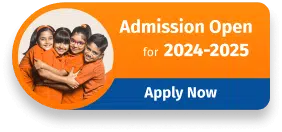Table of Contents
ToggleIntroduction
As classrooms continue to evolve, virtual reality in education is transforming the way students experience learning. Tools like ClassVR are at the forefront of this digital revolution, allowing learners to step inside concepts that were once confined to pages of a textbook. At Inventure Academy, where experiential learning is a cornerstone, this innovative technology is reshaping the educational journey, making it more interactive, immersive, and impactful.This is a prime example of the Importance of Making in Education, where students engage with technology and concepts in ways that go beyond traditional learning.
The Power of Interactive and Experiential Learnin
VR as an Interactive Tool for Students and Instructors
Unlike traditional instruction, where students passively consume information, virtual reality invites them into the content. Whether it’s touring the human circulatory system or walking through a rainforest, VR makes abstract concepts real. With ClassVR, learning becomes an active, multi-sensory experience that engages both the teacher and the learner. contributing to the evolution of Modern Education .
Enhancing Student Motivation and Engagement Through Immersive Learning
This interactive learning technology boosts student interest and curiosity. Lessons once perceived as dull or difficult suddenly become exciting explorations. VR’s novelty not only captures attention but also improves learning outcomes by enabling students to see, feel, and interact with the subject matter.
The Impact of VR on Academic Performance and Personal Growth
Immersive tools like ClassVR support deeper conceptual understanding, making subjects more accessible and memorable. As students engage more fully, they often demonstrate increased academic performance, self-confidence, and a renewed passion for learning. This aligns with Inventure’s Outdoor Expeditions , which prioritize hands-on, real-world learning experiences to complement academic growth.
ClassVR and Its Role in Modern Education
The Shift from Traditional to Visual and Experiential Learning
ClassVR marks a significant shift from textbook-based education to visual and experiential learning. Instead of imagining historical landmarks or complex scientific systems, students can now step into them. This transformation helps learners build stronger mental models and long-term retention of information.
Making Abstract Concepts Tangible with VR Technology
Imagine understanding electromagnetic waves by seeing them in motion or exploring the architecture of ancient Rome through a virtual walkthrough. That’s the kind of conceptual clarity VR enables. It bridges the gap between theoretical knowledge and real-world application.
Unlocking Students' Full Potential Through Immersive Education
By fostering self-directed exploration, ClassVR encourages students to take ownership of their learning. This empowerment builds confidence, creativity, and problem-solving—skills vital for the future.
Practical Applications of VR in Different Subjects
Science
Students can take a virtual dive into the bloodstream or witness molecular reactions in 3D, turning biology, chemistry, and physics into thrilling visual journeys.
Geography
Through ClassVR, geography students can visit the Amazon Rainforest, the Sahara Desert, or even observe tectonic plate movement, understanding biomes and ecosystems with greater depth.
History
Imagine walking through Ancient Egypt, examining relics and tombs, or observing life in Ancient Rome—ClassVR provides this time-travel-like experience, bringing history to life in ways that reading alone cannot.
Conclusion
ClassVR is not just a digital tool—it’s a bridge between imagination and understanding, between curiosity and clarity. Its use at Inventure Academy exemplifies our commitment to adopting cutting-edge digital learning tools to unlock every student’s potential.
As virtual reality in education continues to evolve, tools like ClassVR will play a crucial role in creating more inclusive, exciting, and effective learning environments. For students and teachers alike, this is not just the future—it’s happening right now, byte by byte, experience by experience.



